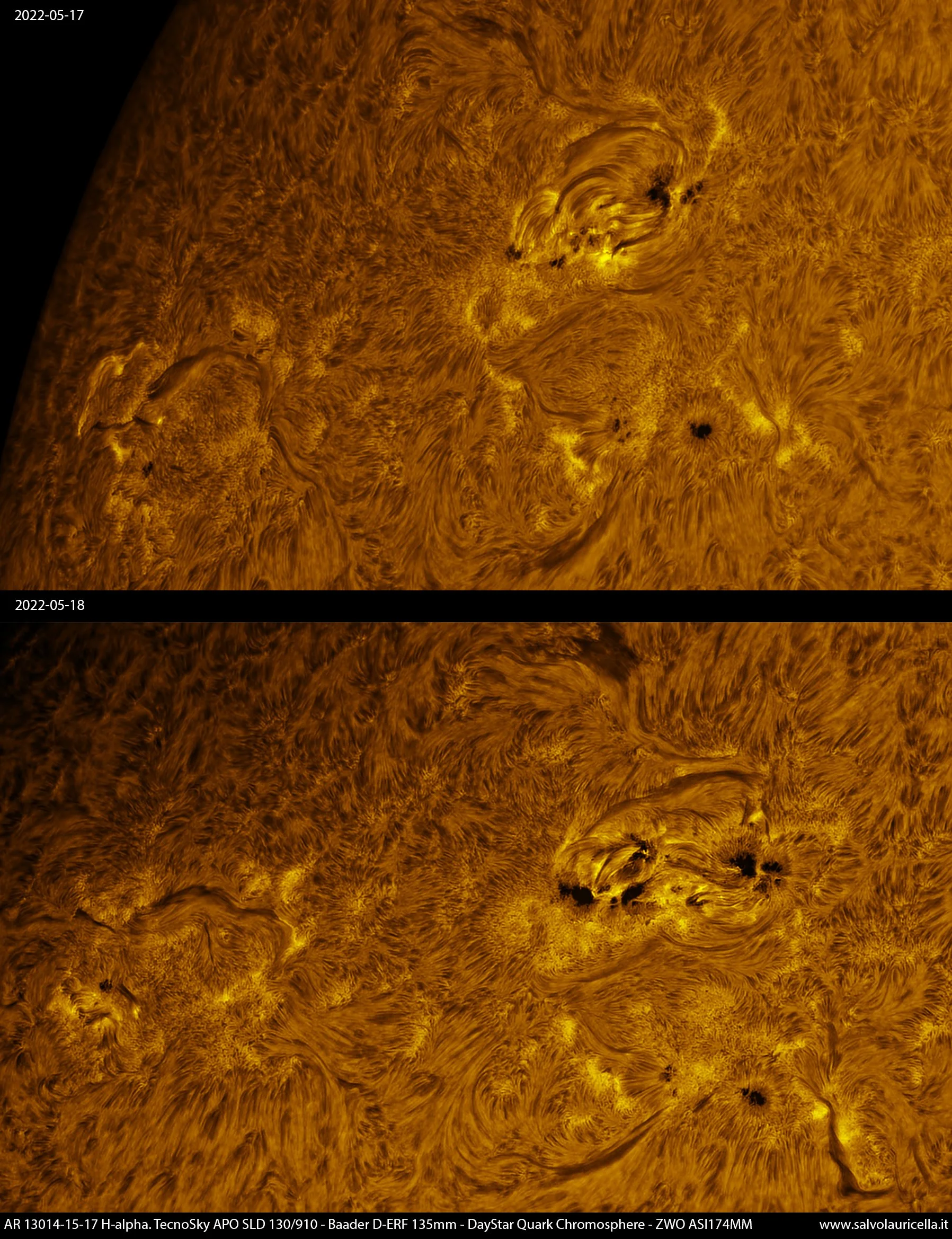
AAPOD2 Image Archives
The Sun from Texas
In 2024, as solar enthusiasts eagerly await the peak of the solar cycle, the allure of capturing the Sun's mesmerizing landscape draws attention to the unique beauty inherent in each photograph. With every lens directed towards the Sun, photographers and observers alike are treated to an ever-changing canvas of solar activity, highlighting the dynamic nature of our celestial neighbor. As we marvel at the Sun's intricate dance of light and shadow, we embrace the enchantment of solar photography, where each image serves as a testament to the unparalleled magic of our solar system's central star. Moreover, the anticipation of the 2024 eclipse adds another layer of excitement, particularly for those in Texas, where the combination of favorable weather conditions and vast open spaces promises an unparalleled viewing experience. As the Lone Star State prepares to witness this celestial spectacle, the stage is set for an unforgettable encounter with the wonders of the cosmos.
Sunspot AR3576
Sunspots, dark blemishes on the surface of the Sun, offer a fascinating glimpse into the dynamic processes occurring within our nearest star. These cooler regions, caused by intense magnetic activity, punctuate the solar surface, creating intricate patterns that evolve over time.
Sunspots are often associated with solar flares and coronal mass ejections, powerful eruptions of energy and matter that can impact space weather and Earth's magnetic field. By studying sunspots, astronomers can gain valuable insights into the Sun's magnetic field and its influence on solar activity.
The number and distribution of sunspots follow an 11-year cycle known as the solar cycle, reflecting the waxing and waning of solar magnetic activity. During periods of high solar activity, sunspot numbers increase, while during periods of low activity, sunspots become scarce.
Despite their diminutive size compared to the vastness of the Sun, sunspots play a significant role in shaping the solar environment and are key indicators of the Sun's ever-changing nature. Studying these enigmatic features not only enhances our understanding of solar dynamics but also contributes to our ability to forecast space weather and its potential impacts on technology and infrastructure here on Earth.
One- Month Sun Spots
As we examine at this month-long solar symphony, we gain a deeper appreciation for the Sun's role as the cosmic orchestrator, shaping the energy and life within our solar system. This image stands as a visual ode to the celestial dance that unfolds on the surface of our star, offering a glimpse into the captivating and ever-changing nature of the Sun's radiant presence.
Active regions comparison
Image Description and Details : Active regions in comparison. The images were taken on May 17 and 18, 2022. Setup: apo refractor 130/910, D-ERF 135mm filter, DayStar Quark Chromosphere and ZWO ASI174MM camera.
Copyright:Salvo Lauricella
THE SUN FROM TEXAS
Image Description and Details : Here we can appreciate the fantastic solar landscape, with the great solar activity that we are having in this solar cycle number 25, this activity that can be seen in the photograph and was captured with a Lunt 60mm double stack telescope and with a 174mm zwo camera. and was taken from Dallas, Tx.
Copyright: ARTURO BUENROSTRO
1 minute of Sun
Image Description and Details :
This is one of the most active days of the new solar cycle, weeks with clouds and I only had 5 minutes of sun, and of those minutes here it is in a single photo, one minute of its activity, impressive the details and the beauty that it gives us minute by minute the sun, each look through the telescope, is a new sun, we are going to continue enjoying this new solar cycle, and hopefully it will give us more landscapes like this, I hope you like it.
Mount Skywatcher azeq6.
Camera Zwo asi 178mm
Telescope Lunt 60MT/ B1200PT double stack
Capture Software Firecapture (60 second video recording, I chose 70% of the frames)
Dallas, Tx.
Copyright: Arturo Buenrostro
Sunspots active region and solar granulation
In this mosaic we can see some sunspots active regions and surrounding solar granulation taken before the current low solar activity. Images was taken from Cremona in northern of Italy through a Maksutov Rumak F20 telescope with an F12 focal reducer, Baader Planetarium ASTF280 astrosolar filter and Baader Planetarium Continuum CWL 540nm filter. Cameras used was I.S. DBK41 and Zwo ASI 224MC. Frames stacked with Autostakkert and processed with Wavelets of registax and Photoshop.
Copyright: Francesco Badalotti








